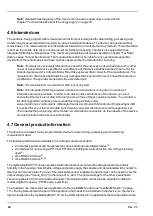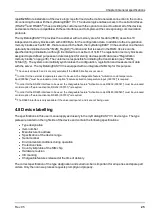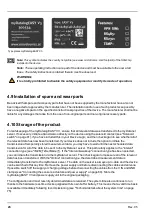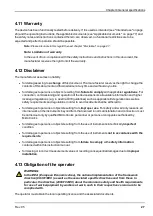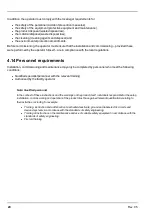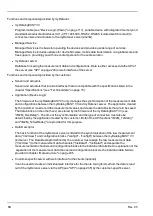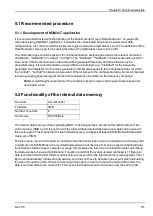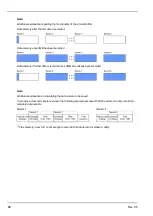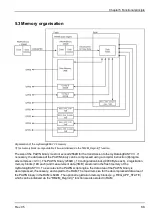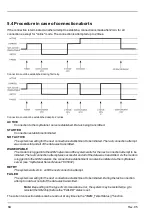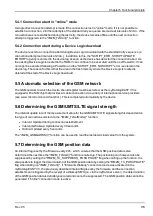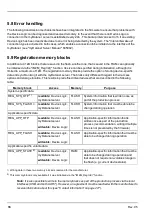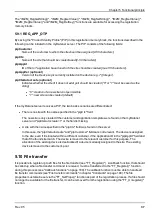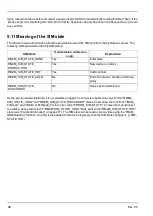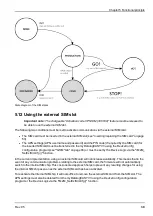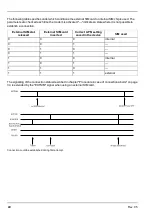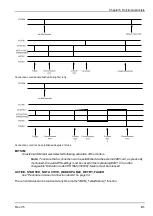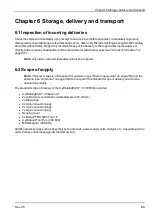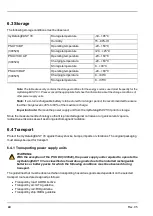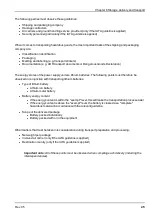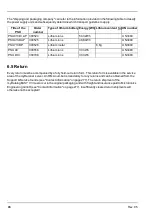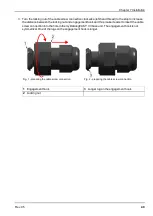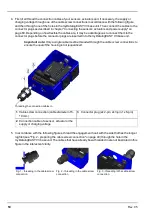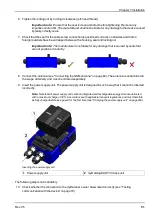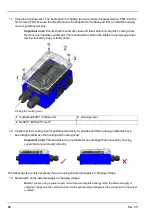
Chapter 5 Functional principle
The "rM2M_RegGetString()", "rM2M_RegGetValue()", "rM2M_RegSetString()", "rM2M_RegSetValue()",
"rM2M_RegDelValue()" and "rM2M_RegDelKey()" functions are available for accessing the registration
memory blocks.
5.9.1 REG_APP_OTP
By saving the "Product Identity Profile" (PIP) in this registration memory block, the functions described in the
following can be initiated on the myDatanet server. The PIP consists of the following fields:
pipCustomer
Name of the customer to whom the site should be assigned [2-50 characters].
pipCtx
Name of the site that should be created/used [2-50 characters].
pipAppId
ID of the IoT application based on which the site should be created [max. 50 characters].
pipAppVer (optional)
Version of the Device Logic currently installed on the device (e.g. 7) [Integer].
pipCtxAutocreate (optional)
Indicates whether the site (if it does not exist yet) should be created ("0" or "1" must be saved as the
string)
l
"0": creation of a new site is not permissible
l
"1": new site can be created (default)
If the myDatanet server receives a PIP, the two basic scenarios are differentiated:
l
There is no site with the name specified in the "pipCtx" field:
The new site is only created if the customer and application template were found on the myDatanet
server and "pipCtxAutocreate=1" or the field is missing.
l
A site with the name specified in the "pipCtx" field was found on the server:
In this case, the "pipCtxAutocreate" and "pipCustomer" fields are not relevant. The device is assigned
to the site, even if it is located within a different customer, if the application ID in the "pipAppId" field and
that of the found site match. The device is moved to the relevant customer for this purpose. The
allocation of the existing device is deallocated if a device is already assigned to the site. The existing
device is moved to the customer's pool.
5.10 File transfer
It is possible to register up to 20 files for the file transfer (see "FT_Register()"). A callback function, that should
be called up when a file transfer command is received, must be transferred to the "FT_Register()" function
during this process (see "Callback functions" on page 189). The callback function must be able to handle all
file transfer commands (see "File transfer commands" in chapter "Constants" on page 188). The file
properties must also be set via the "FT_SetProps()" function as part of the registration process. If a file should
no longer be available for the file transfer, it can be removed from the registration using the "FT_Unregister()"
function.
Rev. 05
37
Summary of Contents for myDatalogEASY V3
Page 2: ......
Page 13: ...Chapter 2 Declaration of conformity Chapter 2 Declaration of conformity Rev 05 13 ...
Page 14: ......
Page 42: ......
Page 76: ......
Page 88: ......
Page 102: ......
Page 110: ......
Page 116: ......
Page 234: ......
Page 244: ......
Page 252: ......
Page 254: ......
Page 266: ......
Page 276: ......


